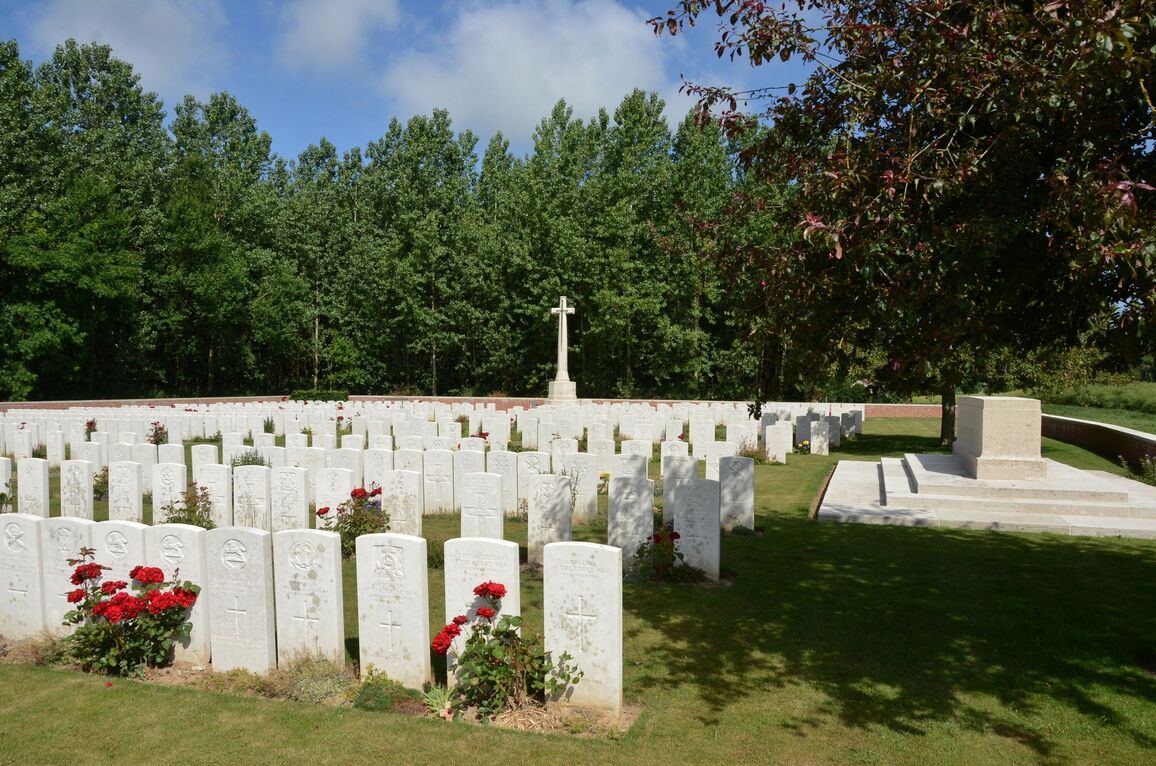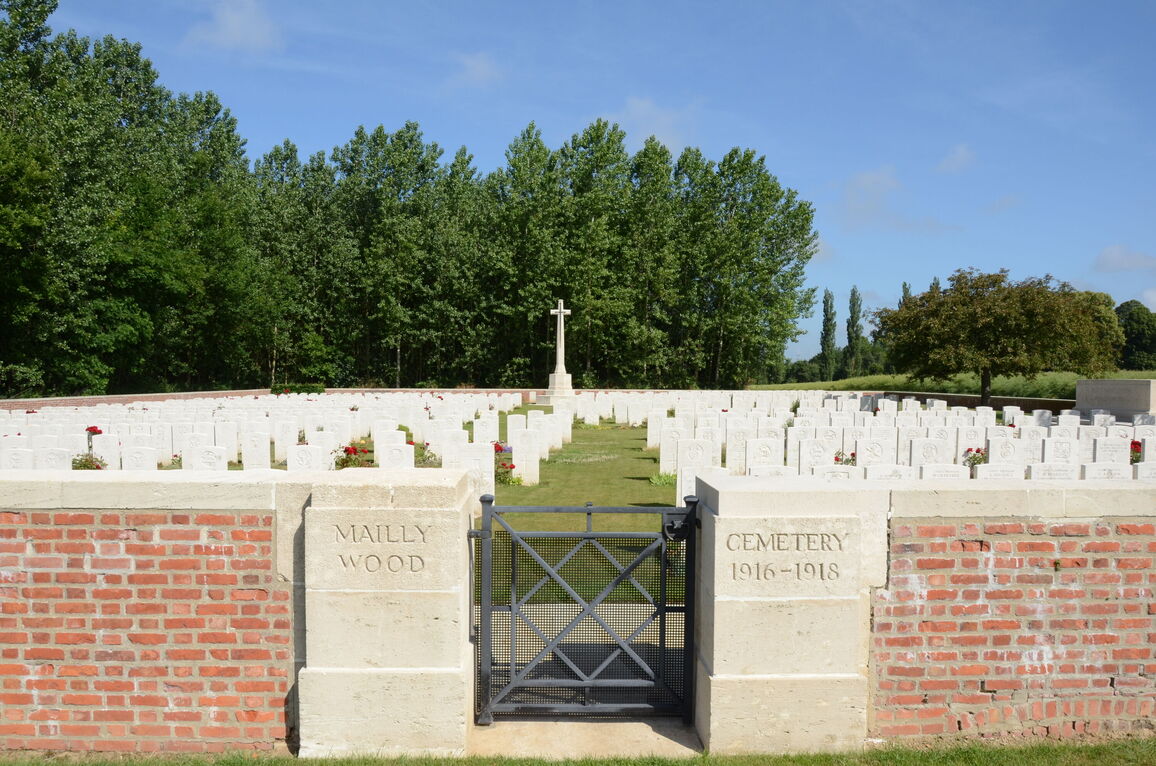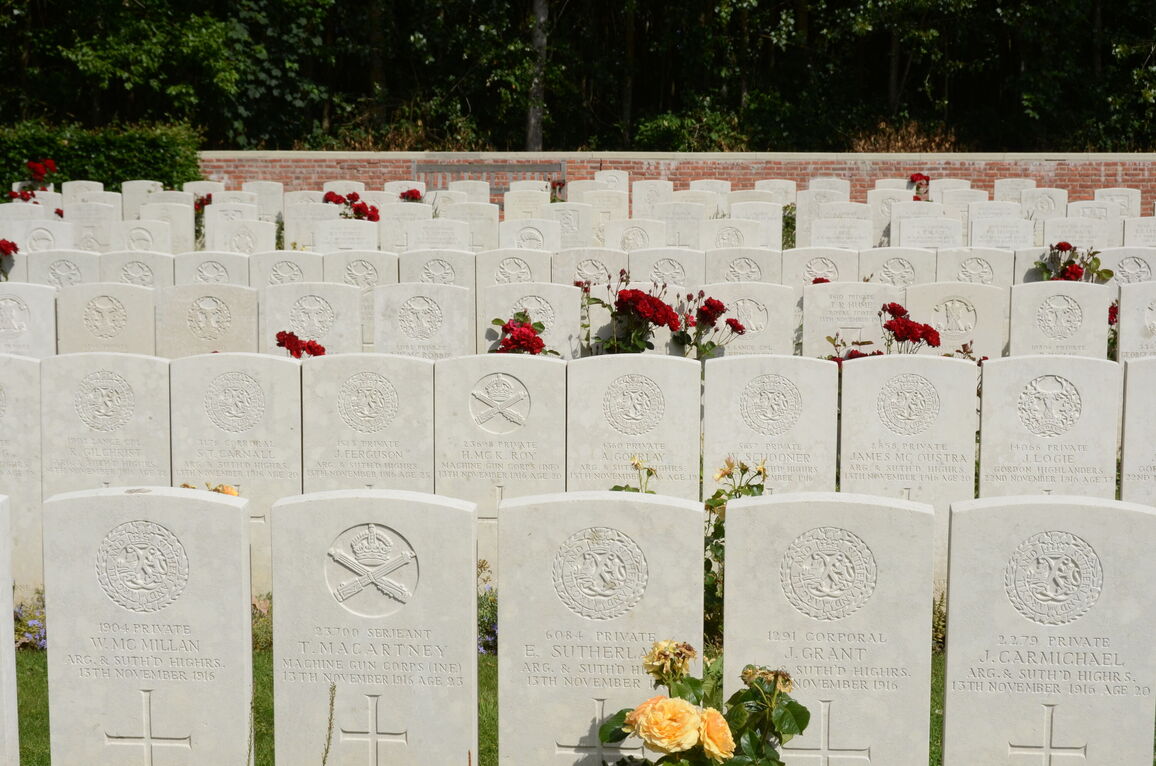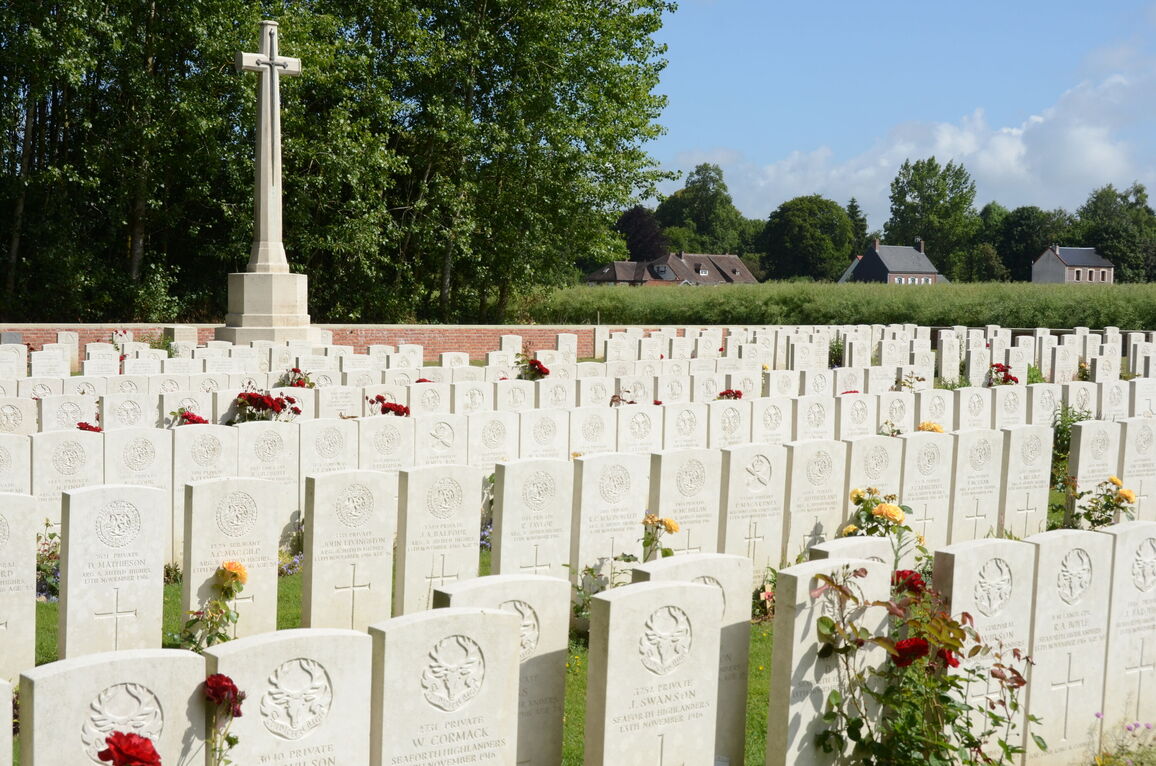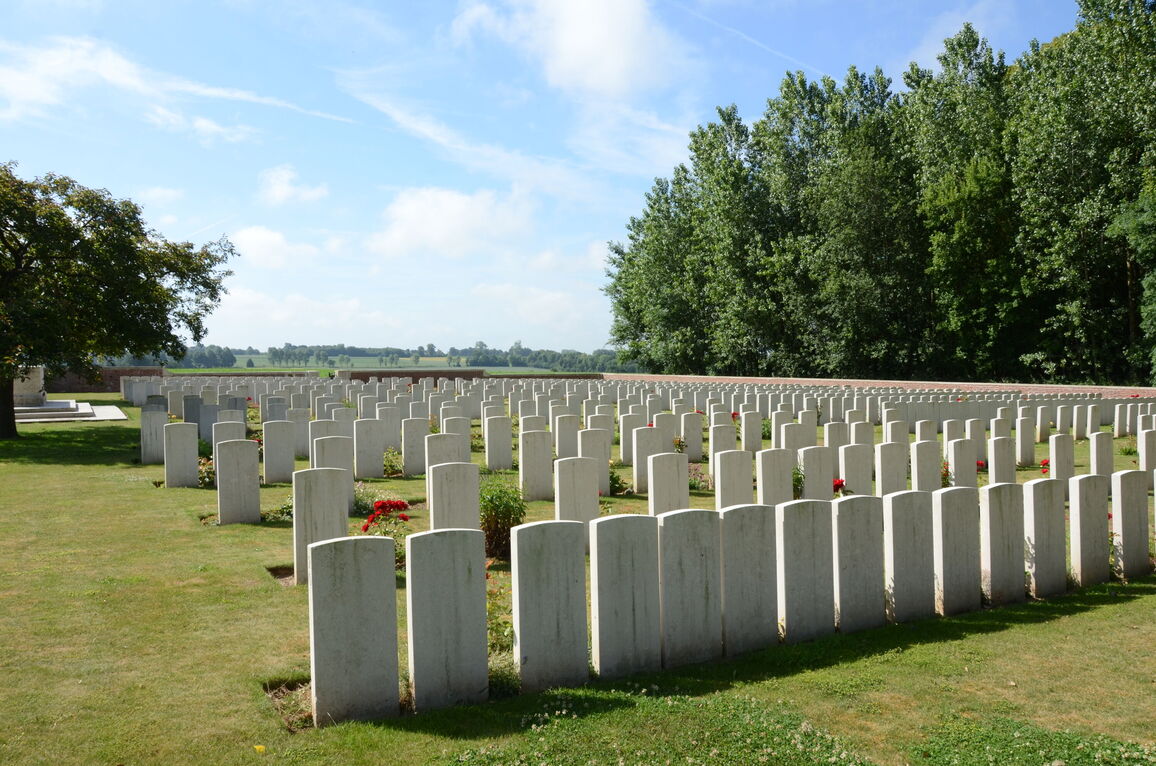Mailly Wood Cemetery, Mailly-Maillet
- Country France
- Total identified casualties 644 Find these casualties
- Region Somme
- Identified casualties from First World War
- GPS Coordinates Latitude: 50.0748, Longitude: 2.59923
Location information
Mailly Wood Cemetery is 9 kilometres north of Albert on the D919. The Cemetery is situated on the outskirts of the village of Mailly-Maillet on the left hand side of the road to Amiens, where it is signposted from the main road onto a 500 metre mud track.
Visiting information
Access can be difficult during winter due to the condition of the mud track and a four-wheel drive vehicle would be required. It should however be emphasised that even with this type of vehicle there is a danger of the vehicle slipping as the track is narrow, becomes very muddy and the fields are below the level of the track.
History information
Mailly-Maillet was within the line taken over from the French in the summer of 1915, and several Commonwealth cemeteries were made in the commune. Mailly Wood Cemetery was begun with the burial of thirteen men of the 2nd Seaforth Highlanders who died on 25 June 1916, and in November 1916, the 51st (Highland) Division buried in it following the capture of Beaumont Hamel. Thereafter, the cemetery was little used until April-August 1918, when the German attack on Amiens brought the front line very close, and further burials were made by the 12th Division (in May) and the 21st (in August), among others. After the Armistice graves from the battlefields immediately north-east of the village were brought into the cemetery, and 30 graves from MAILLY MAILLET MILITARY CEMETERY in the village itself. The cemetery now contains 702 burials and commemorations of the First World War. 60 of the burials are unidentified and there are special memorials to two casualties whose graves in the cemetery could not be found, and to six whose graves in the military cemetery were destroyed by shell fire. The cemetery was designed by Sir Reginald Blomfield.


